Yesterday I decided to take the day off from work and put in some quality time with Max (yes, this is a legit vacation day!). I decided to do my lesson today to make up for the lost time last weekend due to rain. It was cloudy and naturally, as soon as I'd groomed and tacked him up, it began to rain. I waited for awhile and when it seemed to be letting up, I decided to wam him up for his lesson.
We worked at the usual sorts of warm-up drills although it was steadily raining and Max wasn't too appreciative about my dedication and didn't appreciate getting soaked. I had on a gortex parka so I guess it was legit beef on his part.
Fortunately, just when it was time for his lesson the rain stopped and the sun came out. And did it get warm! The thing we really worked on today was the coming to a halt from the canter (canter-halt). Now, I can do this but to be honest, it's not the most elegant movement and I have a habit of getting out of my seat and not be centered. So we worked on this...
The thing with me is that I've been getting ahead of the vertical in my seat plus putting too much weight in the stirrups which in turn throws my legs out in front when I come to a halt. Let's be honest- coming to a halt from the canter is abrupt and for me, it really requires use of my leg and pelvic muscles.
So what the key is to keep a light pressure on the stirrups with the balls of the feet and actually lift your heel- well, it feels like lifting but in reality, the bottom of the foot is parallel to the stirrup pad. This is also something we worked on in the sitting and posting trot. The pressure and support have to come from the calves and legs, not by dropping your heels and putting pressure into the stirrups.
What? Raise your heels? This seems to go against everything you're taught when you start riding- KEEP THE HEELS DOWN! Well, yes...sometimes. There are those moments such as canter-halts when this isn't the case. You also have to keep flexing your ankles, moving your heels up and down. It's hard to describe but you have to be light on the feet and it actually makes a more stable and balanced seat. The legs are going to do a lot of the work and it it all falls into place right, you feel like you're an extension of the horse. OK, easy to say at a nice gait in a nice smooth arena. It's going to be a bit more tricky somewhere else- say out on the trail.
And yes, this dressage stuff actually comes in hand on the trail! So basically, the complete package on the canter-halt has to be:
1) Pelvis and shoulders square and centered on the saddle (you should be this way ALL the time when riding!).
2) Heels up/parallel with the stirrup pad and light contact with the balls of your feet.
3) When stopping, lean behind the vertical, keep your chin down and BREATH THROUGH YOUR DIAFRAGM (basically, it feels like you're leaning forwrd to breathe out- the best analogy is taking a dump :-))!
4) Kick up the horse slightly as you're stopping so to keep the horse from diving forward onto the forehand.
All easier said than done!
If everything is lined up right, your pelvis should not rise out of the saddle and you shouldn't be leaning forward.
OK, now I have to practice this...A LOT! :-)
By the time I was done with my lesson, Max and I were pretty worn out so I gave him a break and turned him out in the arena while I took a nap (the day was just too beautiful to waste! :-)).
And that was my day off...
We worked at the usual sorts of warm-up drills although it was steadily raining and Max wasn't too appreciative about my dedication and didn't appreciate getting soaked. I had on a gortex parka so I guess it was legit beef on his part.
Fortunately, just when it was time for his lesson the rain stopped and the sun came out. And did it get warm! The thing we really worked on today was the coming to a halt from the canter (canter-halt). Now, I can do this but to be honest, it's not the most elegant movement and I have a habit of getting out of my seat and not be centered. So we worked on this...
The thing with me is that I've been getting ahead of the vertical in my seat plus putting too much weight in the stirrups which in turn throws my legs out in front when I come to a halt. Let's be honest- coming to a halt from the canter is abrupt and for me, it really requires use of my leg and pelvic muscles.
So what the key is to keep a light pressure on the stirrups with the balls of the feet and actually lift your heel- well, it feels like lifting but in reality, the bottom of the foot is parallel to the stirrup pad. This is also something we worked on in the sitting and posting trot. The pressure and support have to come from the calves and legs, not by dropping your heels and putting pressure into the stirrups.
What? Raise your heels? This seems to go against everything you're taught when you start riding- KEEP THE HEELS DOWN! Well, yes...sometimes. There are those moments such as canter-halts when this isn't the case. You also have to keep flexing your ankles, moving your heels up and down. It's hard to describe but you have to be light on the feet and it actually makes a more stable and balanced seat. The legs are going to do a lot of the work and it it all falls into place right, you feel like you're an extension of the horse. OK, easy to say at a nice gait in a nice smooth arena. It's going to be a bit more tricky somewhere else- say out on the trail.
And yes, this dressage stuff actually comes in hand on the trail! So basically, the complete package on the canter-halt has to be:
1) Pelvis and shoulders square and centered on the saddle (you should be this way ALL the time when riding!).
2) Heels up/parallel with the stirrup pad and light contact with the balls of your feet.
3) When stopping, lean behind the vertical, keep your chin down and BREATH THROUGH YOUR DIAFRAGM (basically, it feels like you're leaning forwrd to breathe out- the best analogy is taking a dump :-))!
4) Kick up the horse slightly as you're stopping so to keep the horse from diving forward onto the forehand.
All easier said than done!
If everything is lined up right, your pelvis should not rise out of the saddle and you shouldn't be leaning forward.
OK, now I have to practice this...A LOT! :-)
By the time I was done with my lesson, Max and I were pretty worn out so I gave him a break and turned him out in the arena while I took a nap (the day was just too beautiful to waste! :-)).
And that was my day off...




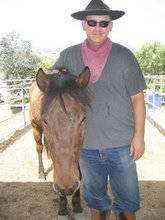
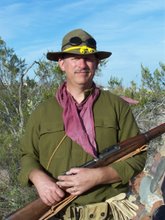
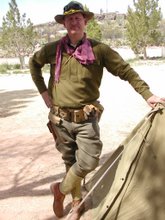
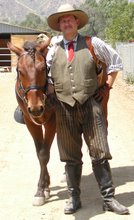
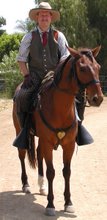

No comments:
Post a Comment